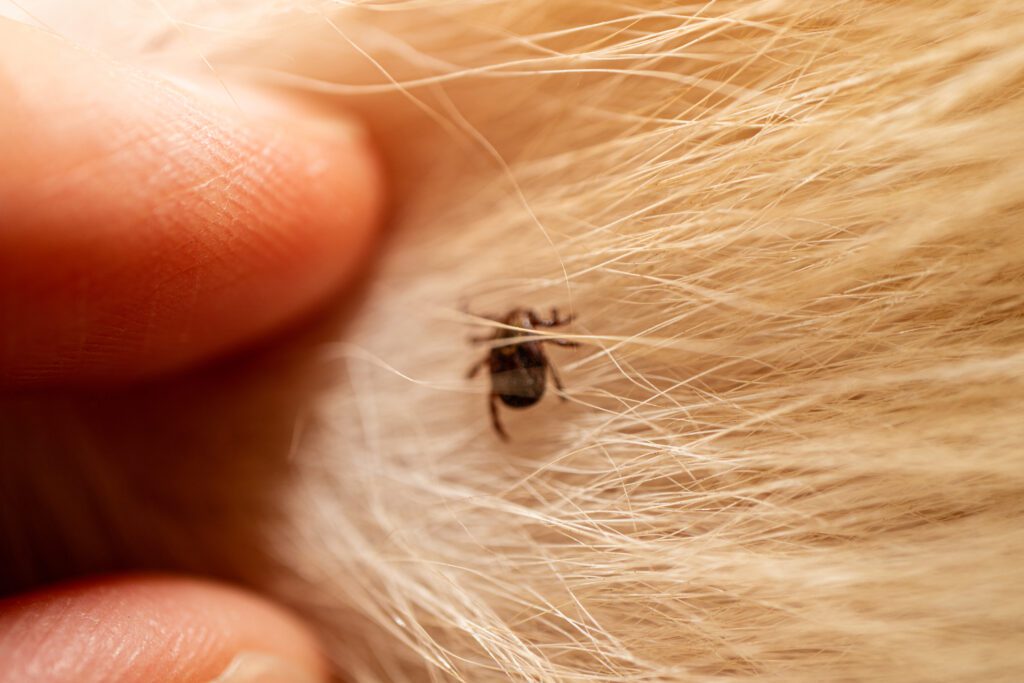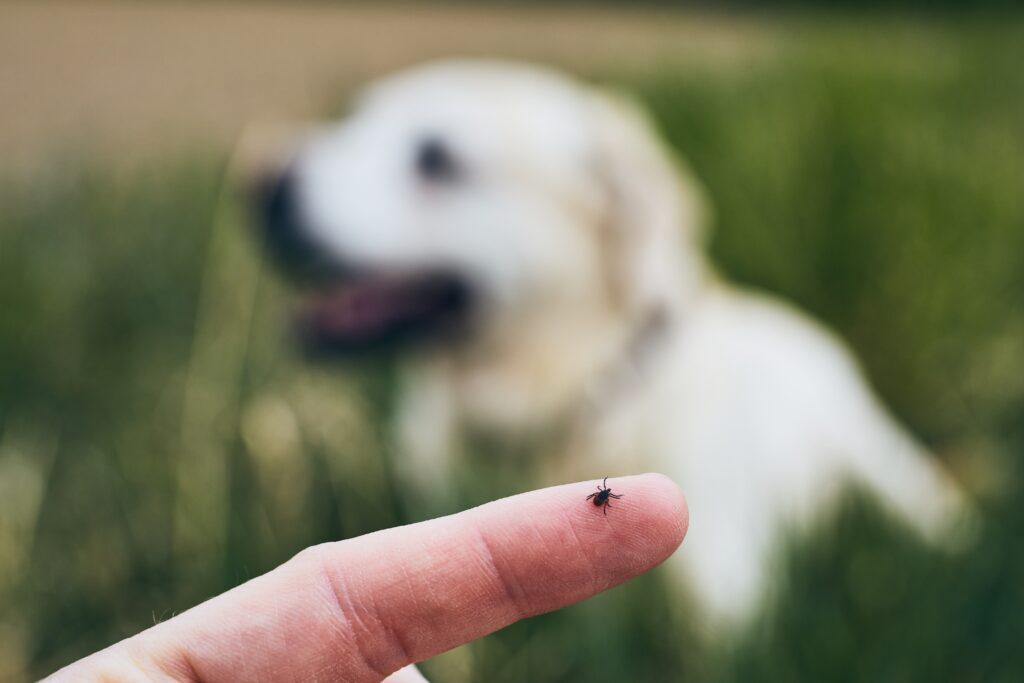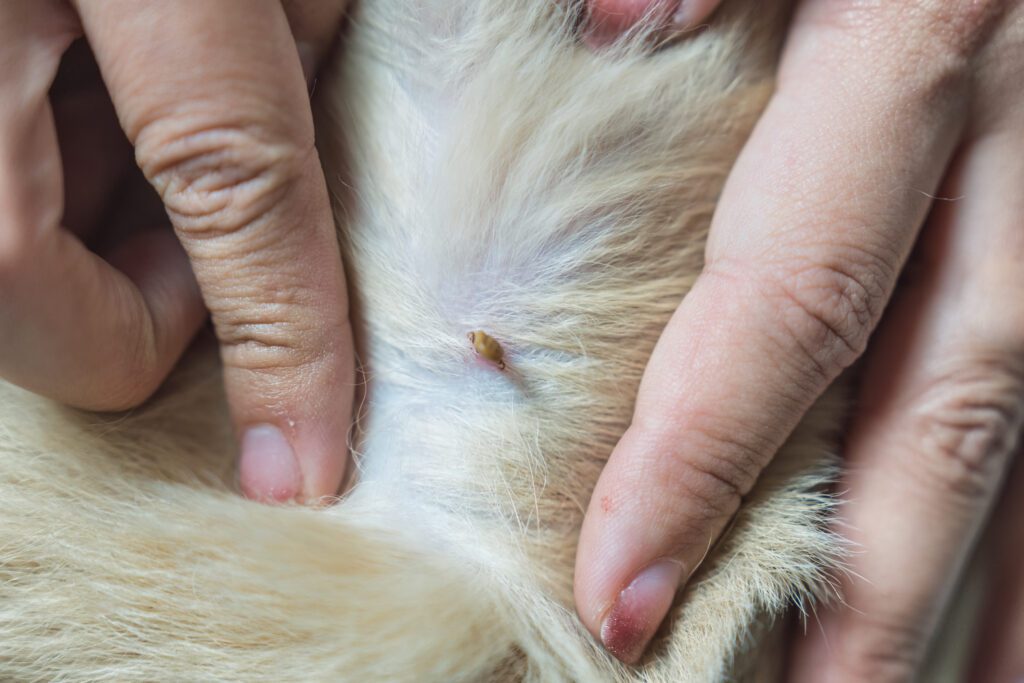Tick Prevention: Symptoms & Treatment for Dogs
As the weather warms up in West Kelowna and across the Okanagan, outdoor adventures with your dog become more frequent-and so do the risks. Chief among them? Ticks. These tiny parasites might seem like a small problem, but they can lead to serious health issues for your pet. At Lakecity Animal Hospital, we’re here to help you protect your dog from ticks with this complete guide to symptoms, treatments, and prevention.
Recognizing a Tick Bite: What It Looks Like on Your Dog’s Skin
Tick bites on dogs can be sneaky. Often, you won’t know your dog’s been bitten until days later. After a tick detaches, it may leave behind a small, red bump, sometimes with a dark scab in the center. In long-haired breeds, these marks are harder to find, which is why regular checks are especially important after walking in wooded or grassy areas.
Pro Tip: Run your hands over your dog’s body after outdoor play. Pay close attention to warm, hidden spots like around the ears, under the collar, between toes, and under the legs.
Early Signs: Tick Symptoms Every Dog Owner Should Watch For
Even before a tick is found, certain symptoms may suggest an issue. Here are a few dog tick symptoms to watch out for:
- Unusual lethargy or fatigue
- Loss of appetite
- Fever
- Swollen joints or lameness
- Sensitivity to touch in certain areas
These could point to dog illness from ticks, such as infections or more serious conditions. If you notice any of these, consult your vet right away.
Understanding the Risk: How Dangerous Are Tick-Borne Diseases?
Ticks don’t just bite—they transmit diseases. The most common dog diseases from ticks include:
- Lyme Disease – Causes joint pain, fever, and lethargy.
- Anaplasmosis – Leads to symptoms like vomiting, diarrhea, and bruising.
- Ehrlichiosis– Can suppress immune function and damage organs.
- Babesiosis – Affects red blood cells, leading to anemia and weakness.
These illnesses can have long-term health consequences, especially if left untreated. That’s why it’s so important to protect your dog from ticks before there’s a problem.
Tick
Safe and Effective Treatment: What to Do When You Find a Tick
If you find a tick, don’t panic. Here’s how to treat dog ticks properly:
- Remove the tick carefully.
Use fine-tipped tweezers to grasp the tick as close to your dog’s skin as possible. Pull upward with steady, even pressure. Don’t twist or jerk—it might cause the mouth-parts to break off and remain embedded.
- Clean the area.
Use rubbing alcohol or mild soap and water to clean the bite area thoroughly.
- Dispose of the tick.
Drop it in alcohol or place it in a sealed bag if you want your vet to identify it.
- Monitor your dog.
Watch for signs of infection or any unusual behavior in the days following removal. When it comes to dog tick treatments, your vet might also recommend medications or blood tests if disease transmission is a concern.
Tick Prevention: Safeguard Your Dog Year-Round
Year-round protection is your best defense. Flea treatment for dogs often includes tick prevention too. Look for vet-recommended products such as:
- Topical treatments – Applied directly to your dog’s skin, offering up to a month of protection.
- Oral chewables – These tasty options can kill and repel ticks from the inside out.
- Tick collars – Slow-releasing medication collars that offer several months of protection.
- Tick sprays and shampoos – Great for immediate relief or use before a hike.
Speak with your vet to choose the best option for your pet’s size, breed, and health. Not all products are safe for puppies, seniors, or dogs with sensitivities. We can help tailor a flea and tick prevention plan that works for your lifestyle and keeps your dog healthy year-round.

When Is It Time to Call the Vet?
While most tick bites are harmless, some situations call for immediate care. Reach out to our West Kelowna veterinary clinic experts at Lakecity Animal Hospital to give your dog the care they need. You should contact your veterinarian if you notice any of the following issues:
- You’re unsure whether the tick was fully removed
- Your dog is showing symptoms like fever or stiffness
- There are multiple ticks or recurring infestations
- The bite area looks infected (swollen, pus-filled, or excessively red)
Don’t take chances with tick-borne illnesses. Acting fast can make all the difference.
Keep Your Dog Tick-Free with Help from Lake City Animal Hospital
Ticks are more than just a nuisance—they can be a real threat to your dog’s health. From knowing what a tick bite looks like on a dog, to spotting dog tick symptoms, and choosing the right dog tick treatments, staying informed is key. Most importantly, ongoing prevention is the safest way to protect your dog from ticks and the diseases they can carry.
If you have questions or need to treat dog ticks, don’t wait. Contact the friendly team at Lakecity Animal Hospital to schedule an appointment today.



